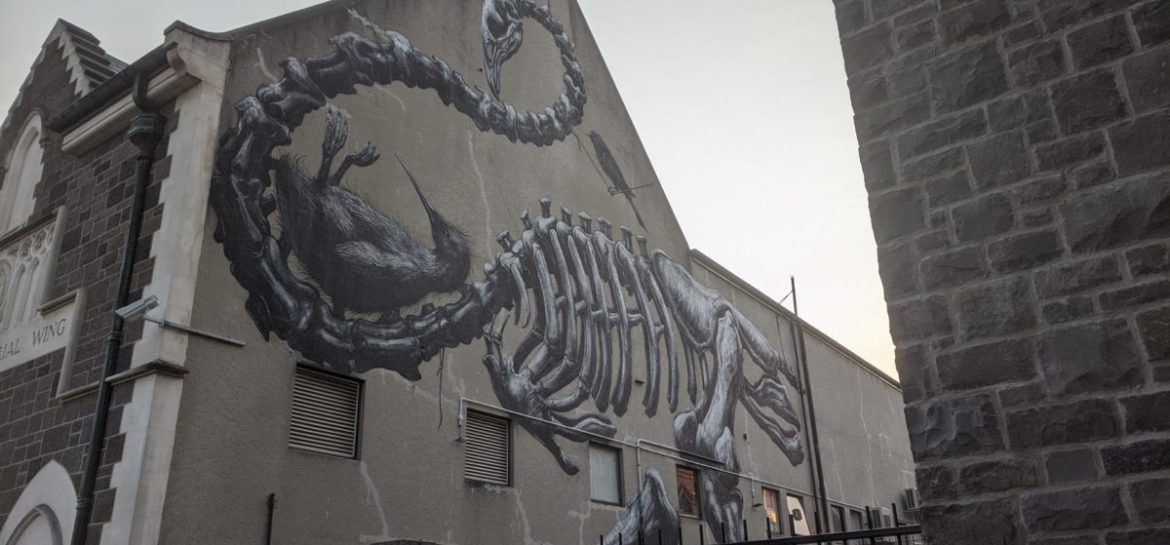
I’m going to assume that you’d like nothing more than to hear about my Christmas holiday exploits. That nothing would fill you with more cheer and joy than knowing what I got up to in New Zealand while you were at home. Now I could go on about the whale watching, or the sunny beaches or the alpine thermal spas, but instead I’ll take a different tact. A bony one!
space
We actually started off our trip with a few days in Singapore, but there was nothing osteologically interesting there other than a number of buildings seemingly clad in the cancellous bone of giants.
space
Kaikoura is a small town on the north east coast of the South Island. It’s a key ecotourism location, because of the way in which the Kaikoura Canyon (part of the Kermadec Trench system) appears about 800m off the coast. The seabed drops significantly allowing for whales and dolphins to frolic about with gay abandon. Although I wasn’t able to fulfil my bucket list item of seeing a colossal squid fight a sperm whale, we did see the latter diving about. Anyway, you came here for bones, so here you go. Strolling along the pebbly beach, we found piles of fishy remains. A great example of the influence of function on skeletal form.
space
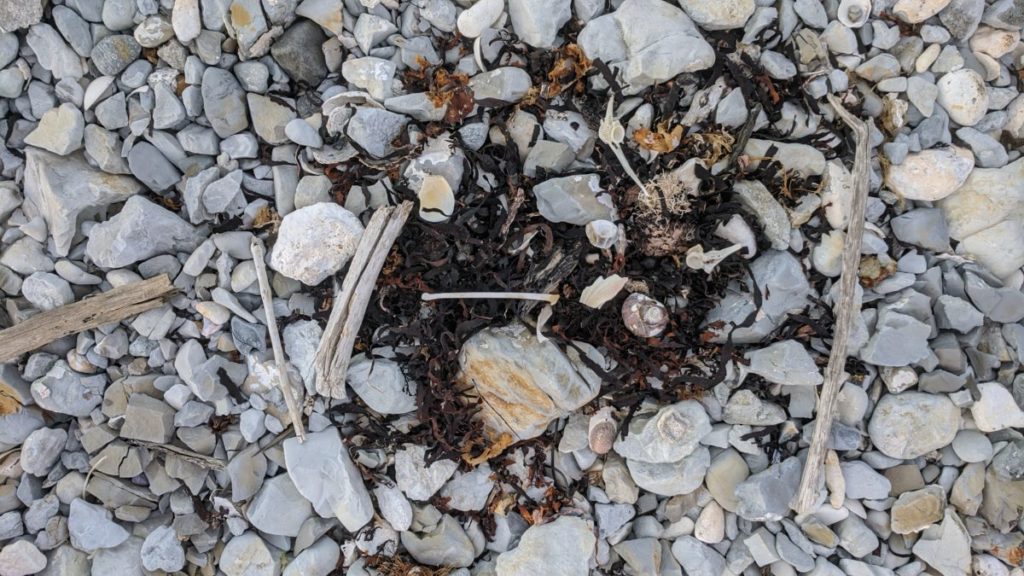
We spent quite a bit of time in Christchurch, a city which is still recovering from the earthquake in 2011. One of our favourite trips here was to the fab International Antarctic Centre. A veritable funhouse of ice-related learning adventures, it also houses a penguin sanctuary. We were able to grab a behind-the-scenes tour, and came face-to-face with this bony bird. Two penguin skeleton facts for you – 1) penguin bones are not light and super-hollow like other birds, so that they can dive underwater, and 2) they have round bony region around their eyes to ensure the eyeballs maintain their round shape at higher underwater pressures.
space
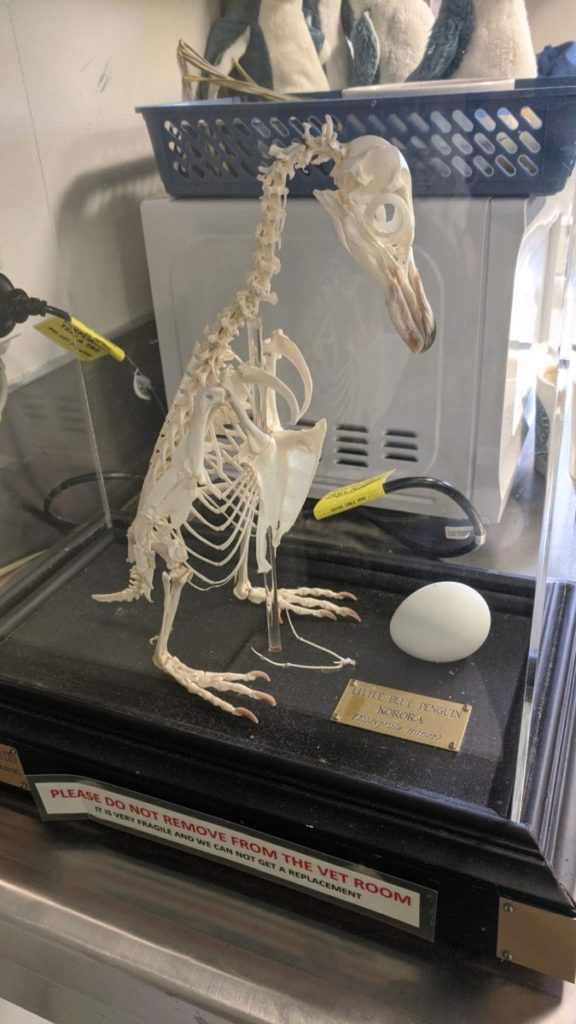
I like frontier towns. It’s part of the reason I love visiting Seattle and enjoyed Reykjavik. Oamaru is one such town. It developed as a result of its port, but it’s unusual in NZ because unlike other towns the key buildings are made of stone. It gives it a grand feel. This is because of the lack of trees here, and the place got the name of the Whitestone City due to this. In one of these buildings is the bonkers Steampunk HQ. It’s like an ode to Mad Max, and a useful reminder of what life will be like post-BREXIT. In it was a great infinity room filled with glowing skulls.
Tourist: “Wow, these glowing skulls are freaky!”Me: “They sure are. I mean, look at how they’ve modeled the zygomatic processes. Crazy, man…”
In another museum there were exhibitions on life in the town during the Victorian period. It included a games rooms, with these sheep bones which were used for playing a form of jacks.
space
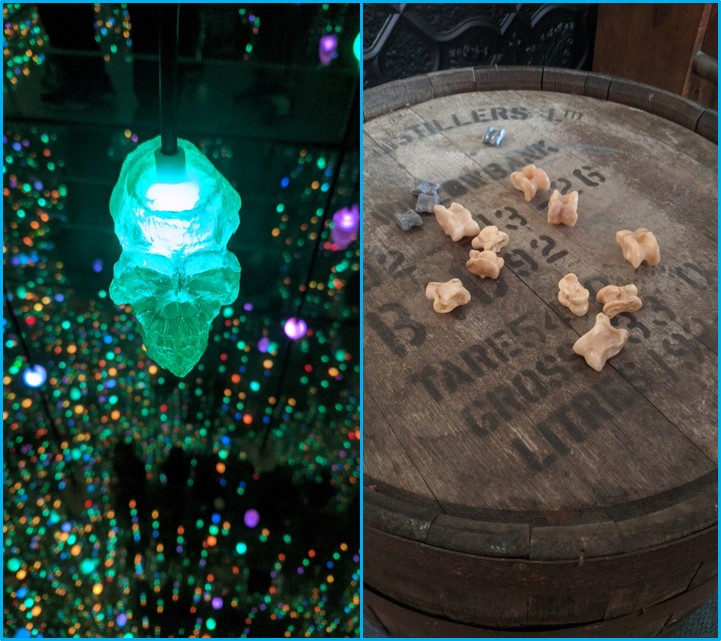
We ended our trip down in Dunedin. Which means that I am thankfully almost ending this post… The Otago Museum is full of skeletons of the crazy New Zealand wildlife. Everything from sperm whale noggins (technical term there…) through to penguins and moa. These tall birds reminded me of our recent paper on the elephant birds in Madagascar. Which I am obliged to mention whenever I see a bird larger than a chicken.
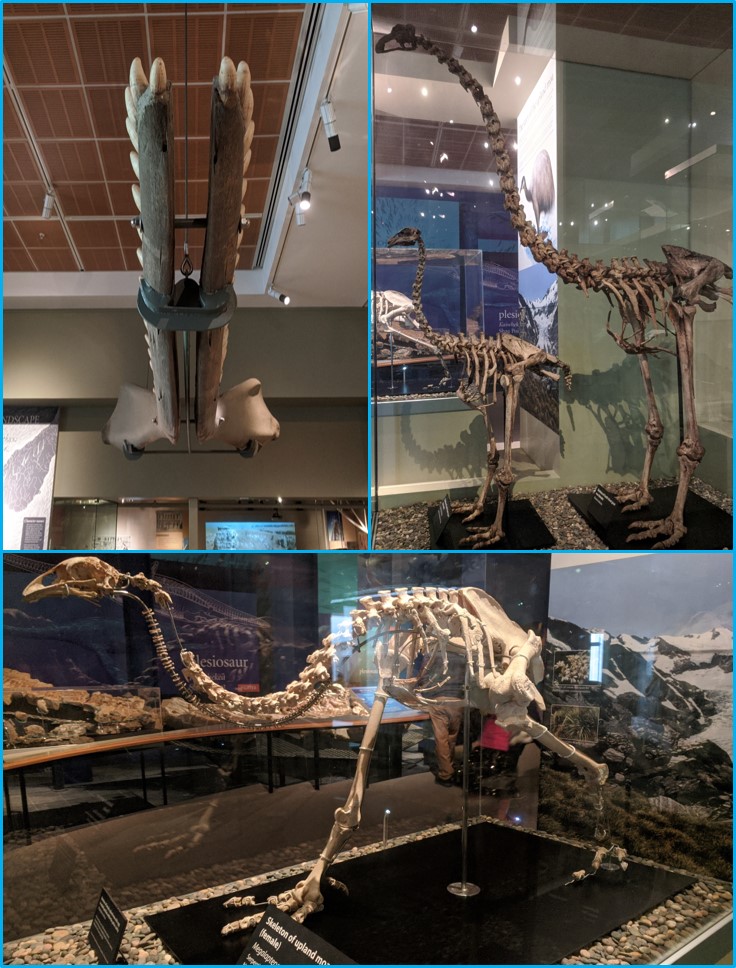
Obviously we did a lot more than just roam the country looking for bones. But I am trying to give the impression I did more than just sit on sandy beaches pretending to do aquatic taphonomy research… Sweet as!